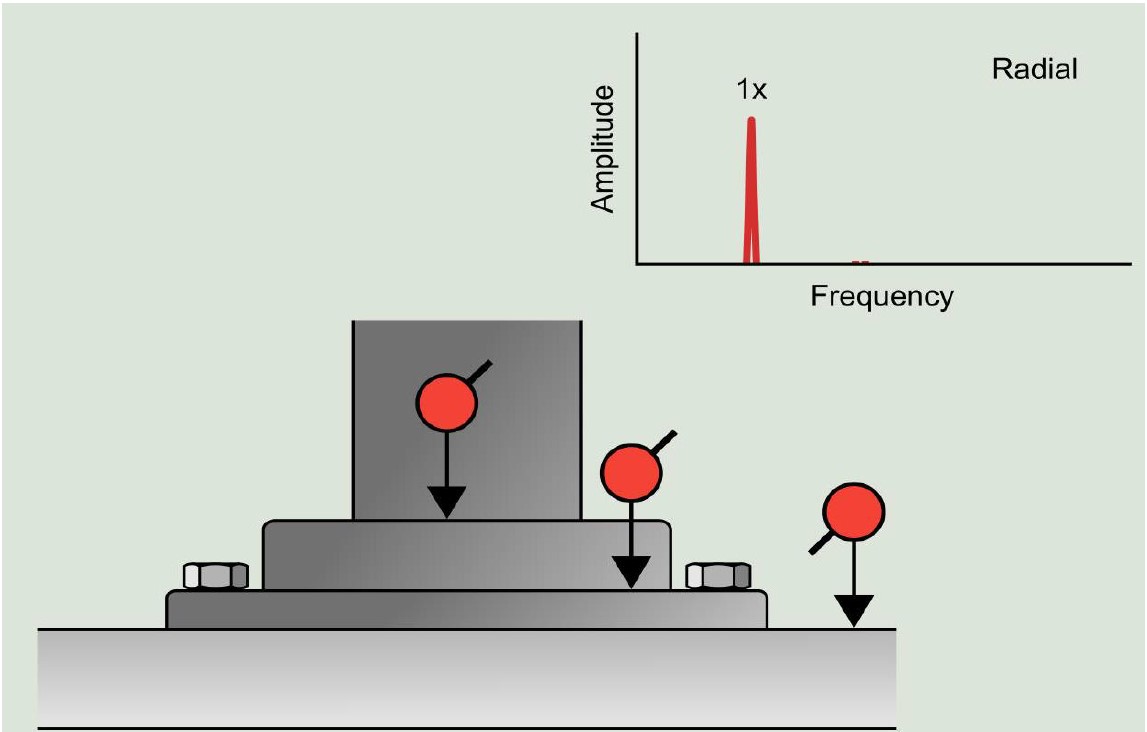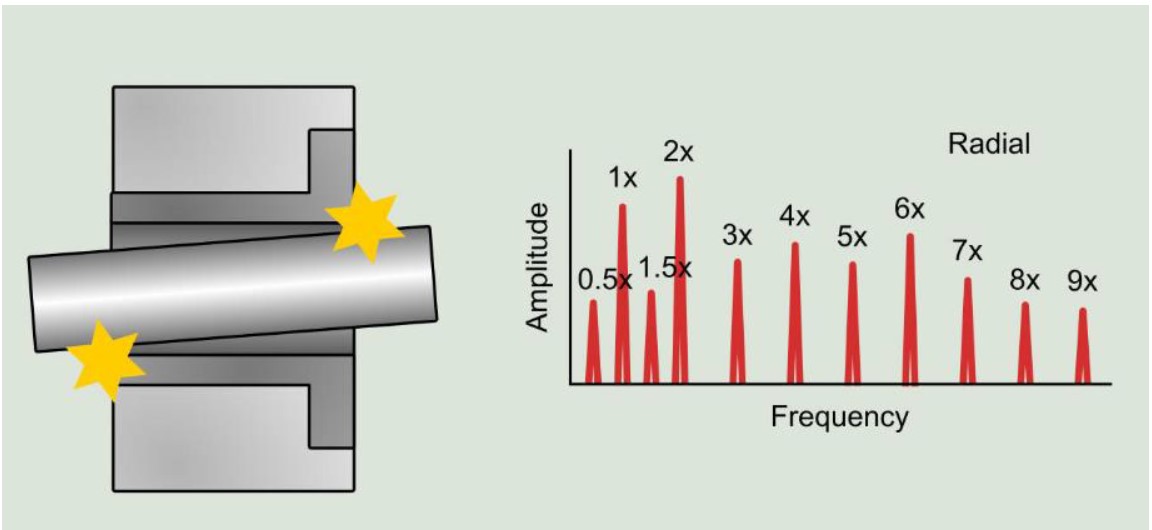Mechanical looseness
Mechanical looseness or improper clearance between components is generally characterized by a long chain of running harmonics with abnormally high amplitudes. In some machines, vibration levels can be excessive due to components being assembled too loosely, for example, in the case of improperly secured bearings. Mechanical looseness can be divided into three categories:
1) Loose construction.
2) Machine or foundation looseness.
3) Internal assembly looseness.
Loose foundation (non-rotating)
This type of looseness is caused by structural loosening or weaknesses in the machine’s feet, baseplate, or foundation. It can also result from degraded grouting material, loose fastening bolts on the base, and frame or foundation deformation (soft foot). Phase analysis can reveal an approximate 180° phase shift between vertical measurements of the machine’s feet/baseplate and the foundation, as shown in the diagram. When suspecting a soft foot, an easy test to confirm it is to loosen each bolt, one by one, and observe if it causes significant changes in vibrations. In such cases, it may be necessary to rework the baseplate or install shims to eliminate distortion during re-tightening of the fastening bolts.

Looseness of machine components / foundation (non-rotating)
This issue is related to loose screws in the bearing housing, cracks in the frame construction or pedestal of the bearing, as shown in the diagram. This creates higher harmonics due to the rocking motion of the bearing housing with loose screws. Because the motion is constrained in one direction, we can observe a distorted shape of the time waveform (which is why harmonics appear in the spectrum).

Internal assembly looseness (rotational looseness)
Internal assembly looseness is typically caused by improper fit between the components of the bearing, resulting in many harmonics in the FFT due to the nonlinear response of the loosened parts to the excitation forces of the rotor. The phase is often unstable and can vary significantly from one measurement to another. Looseness often leads to subharmonic multiples at 0.5X and 1.5X, as shown in the plot.
